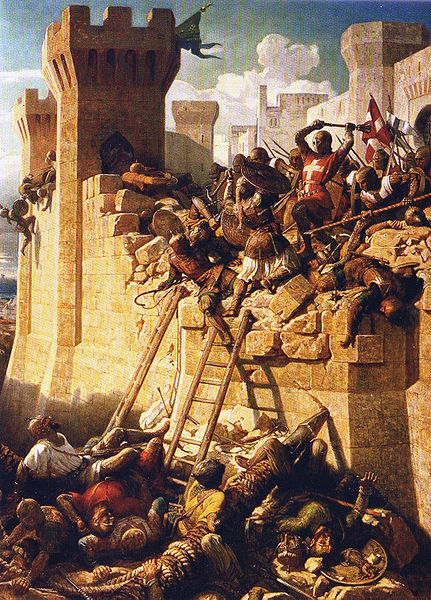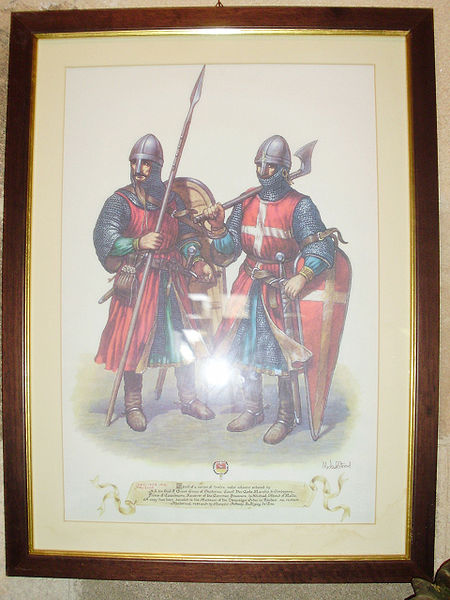- In 1118 Raymond Dupuy succeeded Gerald, founder of the Hospitallers. It was Raymond who proposed that the Hospitallers take up arms. So, no arms & armour before 1118.
- During the 12th and early 13th century, the uniform for brother-knights and brother sergeants was a black or brown cappae. I think that's a full robe with sleeves and a hood. It was worn over armour and had a small white cross on the left side of the chest.
- In 1248 came a papal decree that brother-knights and brother-sergeants could wear wide, black surcoats with a small white cross on it. But only in dangerous areas (i.e. battle?)
- In 1259 there was a papal order that the brother-knights (not the brother-sergeants) would wear black mantles (as opposed to brown?). And during war they would wear red surcoats with a white cross.
- In 1278 the previous decree was revoked. Everyone started wearing the red surcoat to battle.
A couple of things come to mind here. First off, the Hospitallers were well funded. I assume that their arms and armour were modern for the time. Plenty of information about that. So I'm mostly wondering about the cappae versus surcoat and what colors to use.
Another thing that comes to mind is that papal decrees don't usually come out of the blue. It stands to reason that cappae hindered mobility in combat and that Hospitallers started to wear them before 1248 even though they were not allowed. For that same reason I can imagine that the 1278 revocation of the 1259 decree was because people got upset that brother-knights were so distinguished from brother sergeants. After all, nobility should not matter in a religious order, right?
I would love to find more information about the 13th century Hospitallers uniform, as this appears to be the transitional period for this uniform. What exactly is a 12th/13th century cappae? Are there any effegies or paintings that depict Hospitallers in this century? Any sources to back up the dates from the Osprey book?
Thanks in advance!

